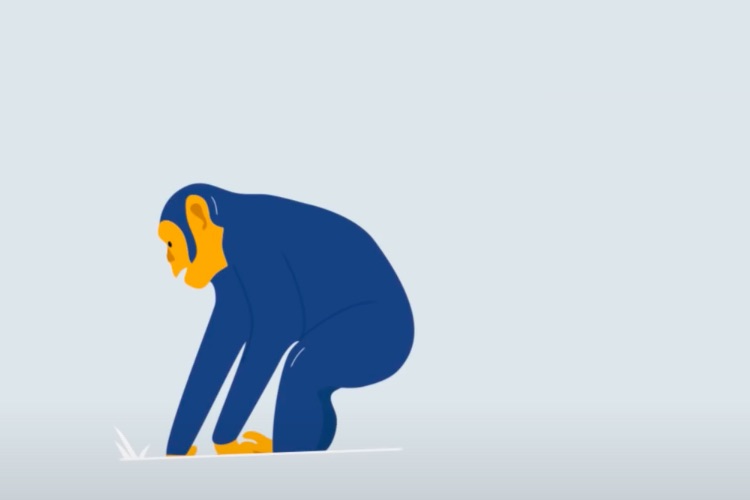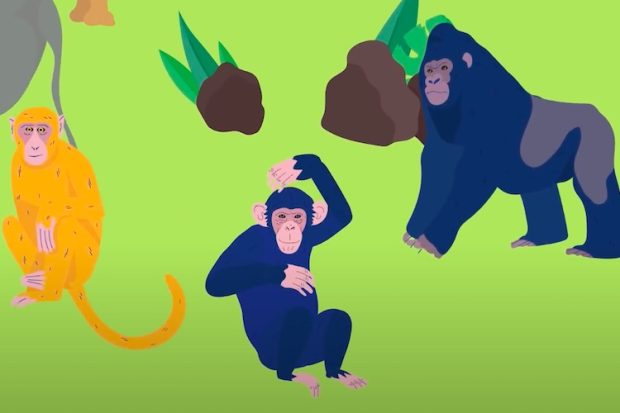Engineering More Effective Antibiotics
Boston University Prof. James Collins on bacterial resistance, active mutagens, and efficacy of biocides

In September the journal Behavioral Ecology and Sociobiology published an article called “Male orangutan bimaturism and reproductive success at Camp Leakey in Tanjung Puting National Park”. We asked one of the authors, Dr Graham L. Banes from CAS-MPG Partner Institute for Computational Biology, to comment on this research.
In a phenomenon that is probably unique among mammals, male orang-utans feature ‘bimaturism’ and thus experience two stages of maturity. Just as in humans, young male orang-utans go through puberty and become sexually active and are able to father offspring. A select few, however, then mature a second time — doubling or tripling in size and developing large ‘cheek pads’ on their faces. Typically, only one of these males is resident in any given area, where he is dominant over all the other orang-utans. Though he tolerates socially subordinate, non-cheek-padded males that live within his home range, encounters with other cheek-padded males are almost always antagonistic, resulting in serious injury or sometimes even in death.

It doesn’t seem adaptive to gain so much weight, and to develop hugely conspicuous saucers on the side of your face, when neither of these traits are vital for you to survive. In fact, they’re totally contrary to an orang-utan’s survival: cheek-padded males have to eat more and fight more; they can’t go as high in the trees or move as quickly — so what’s the point in maturing the second time? There has to be some sort of trade off. It’s commonly been hypothesised that cheek pads make males more attractive to females, and so they have more offspring — in Darwinian terms, that would be sexual selection. However, non-cheek-padded males are still sexually mature and are known to have fathered offspring in both the wild and in zoos. So why go to the trouble of becoming a cheek-padded male if you can successfully father offspring without?
We sought to explain this by conducting paternity testing at Camp Leakey in Tanjung Puting National Park in Indonesian Borneo, where Kusasi had been the dominant male orang-utan for more than a decade. The study took eight years in total, during which time I made two research visits to collect DNA samples, living for many months at a time in the jungle and scooping up faeces at the crack of dawn. I took the faecal samples back to Europe, and analysed them with Dr Linda Vigilant at the Max Planck Institute for Evolutionary Anthropology, who co-supervised my PhD at the University of Cambridge with Dr Leo Howe. We found that, during his period of dominance, Kusasi was indeed more reproductively successful than any of his male rivals — in fact, of those we sampled, he fathered almost all of the offspring born while he was dominant male. So, there was the trade off: despite the hardships imparted by his second stage of maturity, Kusasi was rewarded with a multitude of offspring.
We did find that socially subordinate, non-cheek-padded males fathered offspring, but they only achieved conceptions at the beginning and end of Kusasi’s dominant period, when the dominance hierarchy wasn’t clear. We therefore concluded that male orang-utan bimaturism is an evolutionarily stable strategy, in which subordinate, non-cheek-padded males simply bide their time until periods of rank instability. As we know that non-cheek-padded males copulate with females during the tenure of the dominant male, we alluded to the possibility of female choice: that females only copulate with subordinate males when they know they aren’t ovulating, and thus avoid conceptions with all but the cheek-padded male.
I had wanted to study orang-utans in the wild for as long as I can remember. I’m not entirely sure why, as they’re not my favourite animal — that honour goes to the humble sheep — but we had a stuffed orang-utan toy when I was a child, and I remember asking questions about their cheek pads in a zoo at a very young age.
I went to Borneo to study them at the earliest possible opportunity. While reading for a Bachelor’s degree in Zoology at the University of Aberdeen, I was required to write a thesis based on original research in order to graduate with Honours. It could be on any topic, as long as a faculty member would agree to supervise the project. I decided there and then that I was going to study orang-utans, but having asked dozens of faculty members to supervise my research, I couldn’t find anyone who was wholly willing to sign off on an expedition to Indonesia. I was then fortunate to meet a very senior professor, who I’d actually approached last, having considered him too senior to even have the time to meet me. I will never forget the first time I walked into his office: when I told him I wanted to go to Borneo to study orang-utans, his immediate response was, “Fine. When do you leave?” I went to Tanjung Puting National Park a few months later, and I haven’t stopped working there since.
Having laboured over it for so many years, it’s wonderful to see our paper published in Behavioral Ecology and Sociobiology, and I like to think that we’ve made a small contribution to further unravelling our understanding of orang-utans. However, we have a long way to go before we fully comprehend these species – they might be among our closest living relatives, sharing 97% of their DNA with ours, but we’ve only really been studying them for 40-something years and we still don’t know very much about them, compared to other primates and charismatic mammals.
Foremost, I’d like to see our study repeated at other sites as it becomes possible to do so in the future. At the moment, Camp Leakey is really the only study site in the wild where this question can be addressed: the orang-utans there have been behaviourally monitored for more than 40 years, so we know who were the dominant males and for what lengths of time, when different males developed their cheek pads, when subordinate males became sexually mature, who is maternally related to whom, and who was dominant male at the time of each offspring’s conception. We just don’t have that information for any other orang-utan field site – not merely because few are so well-established, but because orang-utans reproduce only once every eight years. It takes many decades, therefore, to prepare for a study such as ours – in my case, that work was done by my co-author Biruté Galdikas, who established Camp Leakey in 1971 and has spent at least part of every year there since. Thanks to the work of a few dedicated individuals who also run long-term field sites – like Professor Anne Russon from York University in Toronto, who buries herself in swamp in Kutai National Park, or Dr Cheryl Knott from Boston University, who does the same in Gunung Palung on the opposite side of Borneo – we should have comparable sites to Camp Leakey in the longer term. Then, with genetic samples from those study sites, we’ll be able to re-visit male bimaturism and reproductive success with males other than Kusasi. I just hope I haven’t retired or died before we get those answers!
Another key issue in relation to this work is the role of female choice. Our research demonstrates that dominant, cheek-padded male orang-utans enjoy greater reproductive success, and I certainly believe that it makes them more attractive to females, but nobody has been able to empirically test this: that females find such males more attractive. Female choice has always been such a controversial topic – I remember during one of my oral exams at university, my female examiner told me that there was no evidence for female choice in any species whatsoever. I disagreed and asked if she was her husband’s wife or his concubine, which I rather thought proved my point, but – not surprisingly – she didn’t take it very well. Fortunately, I passed the exam, and I’m still captivated by the concept of female choice. I sometimes wish we could just hand out questionnaires and ask male orang-utans why they bothered to develop cheek pads, instead of some other enticing ornament, or ask a few female orang-utans to rank the sexiest males on a scale from 1 to 10. I’d like to think that’s the direction this field is moving in, but I fear it’s a long way off before those surveys yield any answers. I think the best we could anticipate is that they come back covered in poop.

Boston University Prof. James Collins on bacterial resistance, active mutagens, and efficacy of biocides

New research suggests that the ‘hardware’ in our brain is tuneable

Descendants of starved worms appear to be more resistant to starvation and heat stress